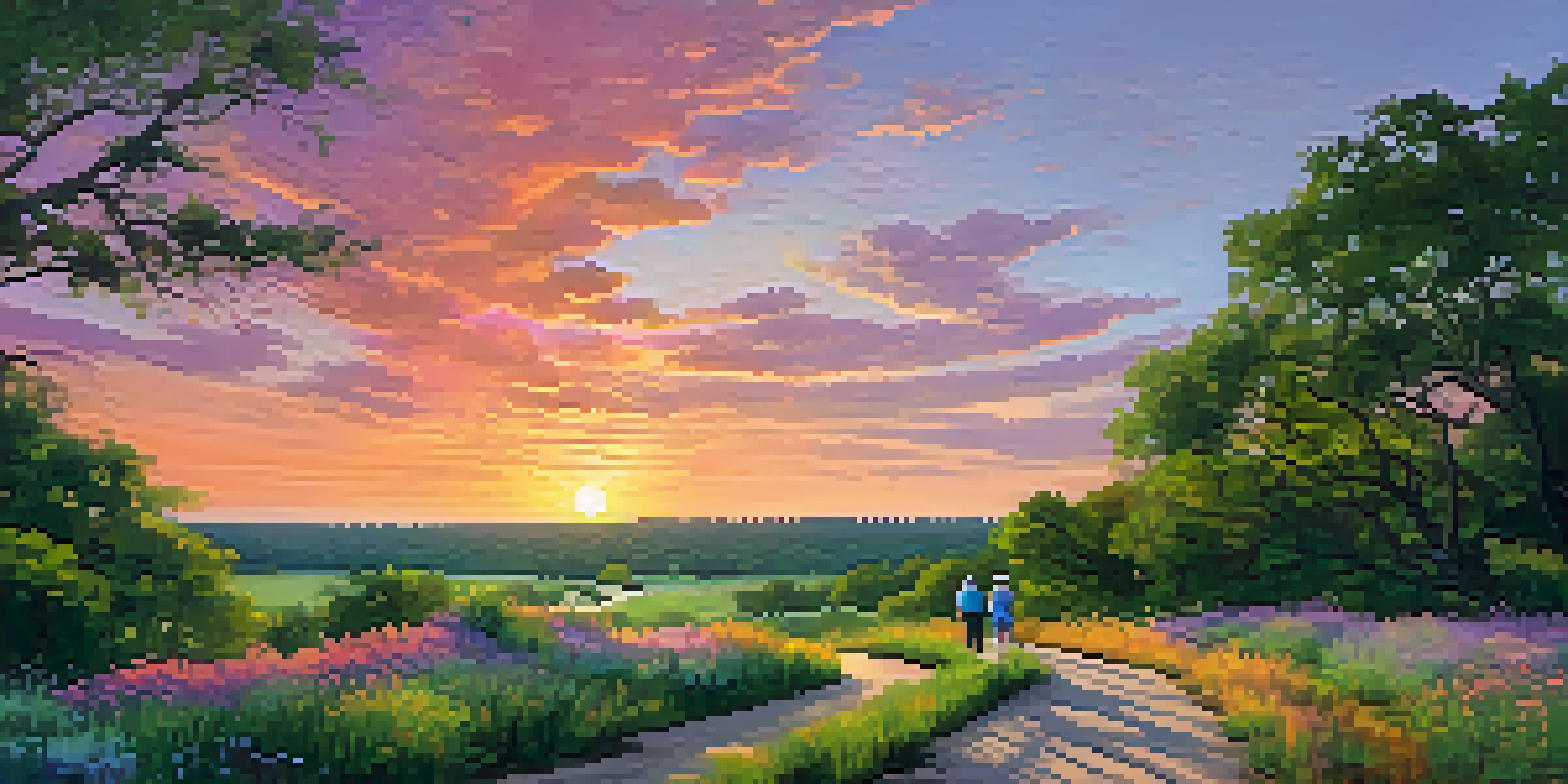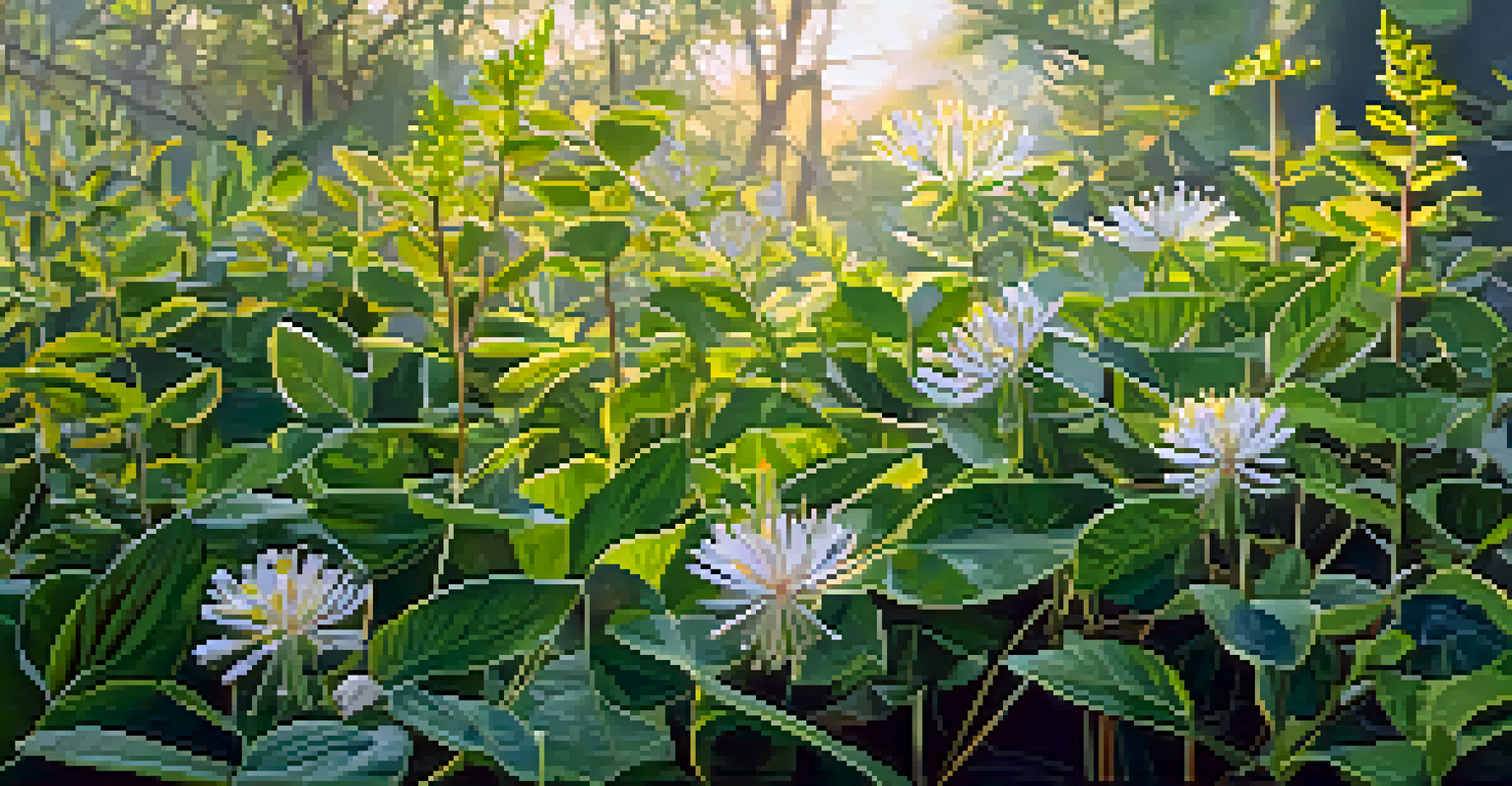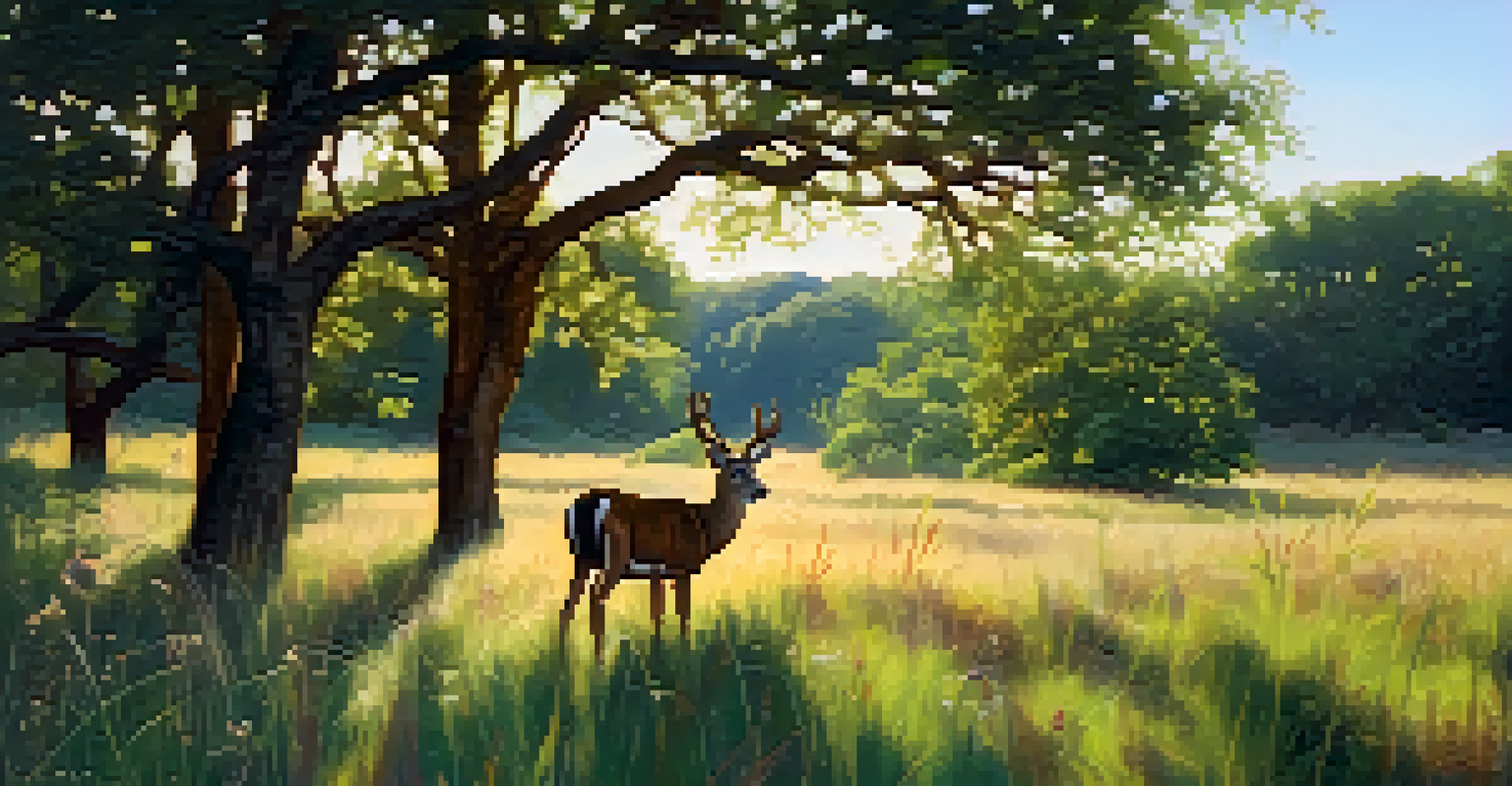The Importance of Austin's Greenbelts for Local Wildlife

Austin's Greenbelts: Nature's Urban Sanctuary
Austin's greenbelts serve as vital urban sanctuaries, providing a refuge for diverse wildlife amidst the city’s hustle and bustle. These lush corridors not only enhance the beauty of the urban landscape but also create essential habitats for countless species. From deer and raccoons to various bird species, these greenbelts are like nature’s playground, allowing wildlife to thrive within the urban sprawl.
In every walk with nature one receives far more than he seeks.
The interconnected trails and waterways found in these greenbelts allow animals to move freely, find food, and reproduce. This connectivity is crucial for maintaining genetic diversity, which is vital for the resilience of wildlife populations. In essence, these greenbelts act as lifelines, linking fragmented habitats and ensuring that wildlife can survive and flourish.
Moreover, these spaces provide opportunities for residents to engage with nature, fostering a sense of community and appreciation for local ecosystems. It's not just a haven for wildlife but also a reminder for us of the importance of preserving our natural surroundings in an ever-expanding urban environment.
Biodiversity Boost: The Role of Greenbelts
Biodiversity is the variety of life in a particular habitat, and greenbelts play a significant role in enhancing it within Austin. These areas support a rich assortment of flora and fauna, creating a vibrant ecosystem that is essential for maintaining ecological balance. By preserving diverse plant species, greenbelts provide food and shelter for a wide range of animals, from insects to large mammals.

The presence of various plant species also helps in creating microhabitats, which are important for different wildlife needs. For example, some plants attract pollinators like bees and butterflies, while others provide cover for small mammals and birds. This interconnectedness illustrates how every element in a greenbelt contributes to the overall health of the ecosystem.
Greenbelts as Wildlife Havens
Austin's greenbelts provide essential habitats for diverse wildlife, allowing species to thrive amidst urban development.
Furthermore, fostering biodiversity in these areas has long-term benefits, such as increasing resilience to climate change and promoting natural pest control. When we protect and enhance biodiversity in Austin's greenbelts, we’re not just saving wildlife; we’re also securing a healthier environment for ourselves.
Ecosystem Services: Greenbelts as Nature's Helpers
Greenbelts offer numerous ecosystem services that benefit both wildlife and human residents. One of the most significant services is flood management; the vegetation in these areas absorbs excess rainwater, reducing runoff and preventing flooding in urban areas. This natural solution is not only effective but also sustainable, showcasing how greenbelts can serve multiple purposes.
The clearest way into the Universe is through a forest wilderness.
Additionally, greenbelts improve air quality by filtering pollutants and producing oxygen, creating a healthier environment for all living beings. The trees and vegetation act as natural air purifiers, trapping dust and absorbing harmful gases, which is especially important in urban settings where air pollution can be a concern.
Moreover, these green spaces provide recreational opportunities for residents, promoting physical activity and mental well-being. Whether it's hiking, biking, or simply enjoying a picnic, the greenbelts enhance the quality of life for individuals while simultaneously supporting wildlife.
Habitat Creation: Supporting Local Wildlife Species
The creation of habitats within Austin's greenbelts is crucial for supporting local wildlife species. These areas simulate natural environments, providing everything from food sources to nesting sites. For many species, particularly those that are urban-adapted, these greenbelts are vital for their survival as they often lack traditional habitats due to urban development.
In particular, greenbelts are essential for maintaining populations of native species, which are adapted to the local climate and conditions. By preserving these habitats, we can help ensure that native species continue to thrive, contributing to the overall health of Austin's ecosystems. For instance, native birds find safe nesting sites, while mammals can forage and raise their young in relative safety.
Biodiversity and Ecosystem Health
These green spaces enhance biodiversity, supporting various plant and animal life that contribute to ecological balance.
As urban areas expand, the preservation and enhancement of these habitats become increasingly important. Protecting greenbelts not only supports wildlife but also preserves the unique biodiversity that Austin is known for, allowing future generations to enjoy a rich natural heritage.
Community Engagement: Connecting People and Nature
Community engagement is a vital aspect of preserving Austin's greenbelts and the wildlife that inhabit them. These spaces provide an opportunity for residents to connect with nature and understand the importance of wildlife conservation. Through educational programs, guided hikes, and volunteer opportunities, local communities can foster a sense of stewardship for these natural areas.
When people become involved in the maintenance and protection of greenbelts, they develop a deeper appreciation for the wildlife that calls these spaces home. This connection often inspires individuals to advocate for conservation efforts, ensuring that both wildlife and humans can coexist harmoniously. It's about building a community that values and respects nature.
Moreover, community events held in greenbelts can help raise awareness about the ecological importance of these areas. By highlighting success stories and promoting conservation efforts, we can encourage more people to become active participants in protecting Austin's natural heritage.
Challenges Facing Austin's Greenbelts
Despite their critical importance, Austin's greenbelts face numerous challenges that threaten their integrity and the wildlife they support. Urban development, pollution, and climate change are just a few factors that put pressure on these natural spaces. As the city grows, the encroachment on greenbelts can fragment habitats, making it difficult for wildlife to survive.
Additionally, invasive species pose a significant threat to the native flora and fauna within these greenbelts. These non-native plants often outcompete local species for resources, disrupting the delicate balance of the ecosystem. Addressing these challenges requires proactive management strategies to protect and restore native habitats.
Community Role in Conservation
Engaging the community in greenbelt preservation fosters a deeper appreciation for nature and promotes wildlife conservation efforts.
Public awareness and involvement play crucial roles in overcoming these challenges. By educating the community about the threats facing greenbelts and encouraging sustainable practices, we can work together to protect these vital spaces for future generations.
The Future of Austin's Greenbelts: A Call to Action
The future of Austin's greenbelts and their wildlife hinges on our collective actions today. Protecting these natural areas is not just an environmental issue; it’s a community responsibility. As residents, we must advocate for policies that prioritize conservation, support local wildlife, and ensure that greenbelts remain intact amid urban expansion.
Engaging in local conservation efforts, whether through volunteering, attending community meetings, or simply spreading awareness, can significantly impact the health of these ecosystems. Every small action contributes to a larger movement towards preserving Austin's natural heritage and the wildlife that inhabits it.

Ultimately, the fate of Austin's greenbelts lies in our hands. By coming together to cherish and protect these vital spaces, we can ensure a thriving environment for both wildlife and future generations of Austinites.